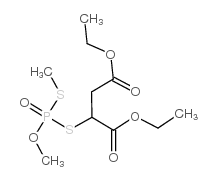Aging pathways for organophosphate-inhibited human butyrylcholinesterase, including novel pathways for isomalathion, resolved by mass spectrometry.
He Li, Lawrence M Schopfer, Florian Nachon, Marie-Thérèse Froment, Patrick Masson, Oksana Lockridge
Index: Toxicol. Sci. 100(1) , 136-45, (2007)
Full Text: HTML
Abstract
Some organophosphorus compounds are toxic because they inhibit acetylcholinesterase (AChE) by phosphylation of the active site serine, forming a stable conjugate: Ser-O-P(O)-(Y)-(XR) (where X can be O, N, or S and Y can be methyl, OR, or SR). The inhibited enzyme can undergo an aging process, during which the X-R moiety is dealkylated by breaking either the P-X or the X-R bond depending on the specific compound, leading to a nonreactivatable enzyme. Aging mechanisms have been studied primarily using AChE. However, some recent studies have indicated that organophosphate-inhibited butyrylcholinesterase (BChE) may age through an alternative pathway. Our work utilized matrix-assisted laser desorption/ionization-time-of-flight mass spectrometry to study the aging mechanism of human BChE inhibited by dichlorvos, echothiophate, diisopropylfluorophosphate (DFP), isomalathion, soman, sarin, cyclohexyl sarin, VX, and VR. Inhibited BChE was aged in the presence of H2O18 to allow incorporation of (18)O, if cleavage was at the P-X bond. Tryptic-peptide organophosphate conjugates were identified through peptide mass mapping. Our results showed no aging of VX- and VR-treated BChE at 25 degrees C, pH 7.0. However, BChE inhibited by dichlorvos, echothiophate, DFP, soman, sarin, and cyclohexyl sarin aged exclusively through O-C bond cleavage, i.e., the classical X-R scission pathway. In contrast, isomalathion aged through both X-R and P-X pathways; the main aged product resulted from P-S bond cleavage and a minor product resulted from O-C and/or S-C bond cleavage.
Related Compounds
| Structure | Name/CAS No. | Molecular Formula | Articles |
|---|---|---|---|
 |
Isomalathion
CAS:3344-12-5 |
C10H19O6PS2 |
|
Probing the chiral separation mechanism and the absolute con...
2013-03-15 [J. Chromatogr. A. 1281 , 26-31, (2013)] |
|
Comparison of photocatalysis and photolysis of malathion, is...
2007-11-01 [Water Res. 41(19) , 4504-14, (2007)] |
|
An enzyme test for determining isomalathion impurities in wa...
1986-01-01 [Bull. World Health Organ. 64(3) , 397-401, (1986)] |
|
Toxicological properties of trialkyl phosphorothioate and di...
1983-01-01 [J. Environ. Sci. Health B 18(1) , 89-117, (1983)] |
|
Malathion detoxification by human hepatic carboxylesterases ...
2005-01-01 [J. Biochem. Mol. Toxicol. 19(6) , 406-14, (2005)] |